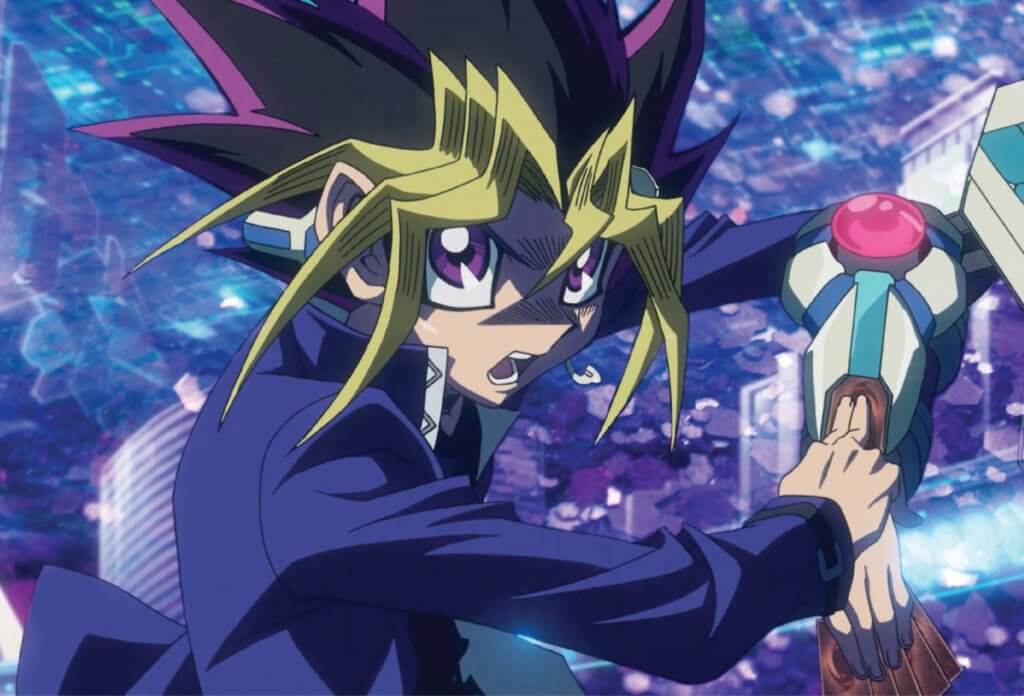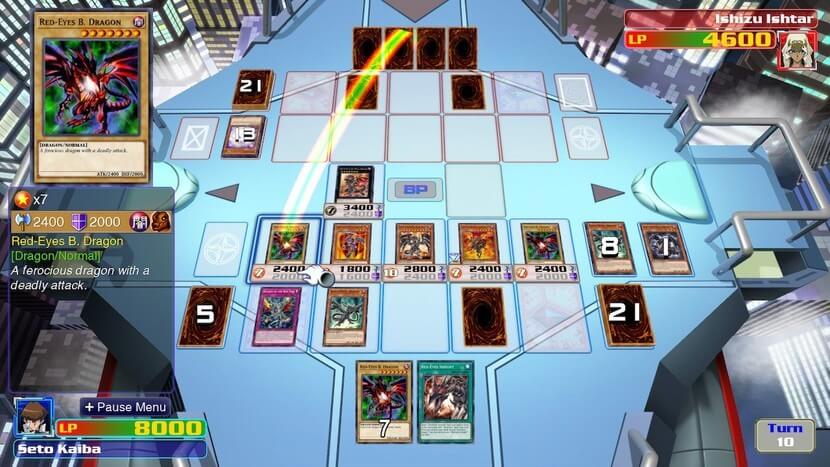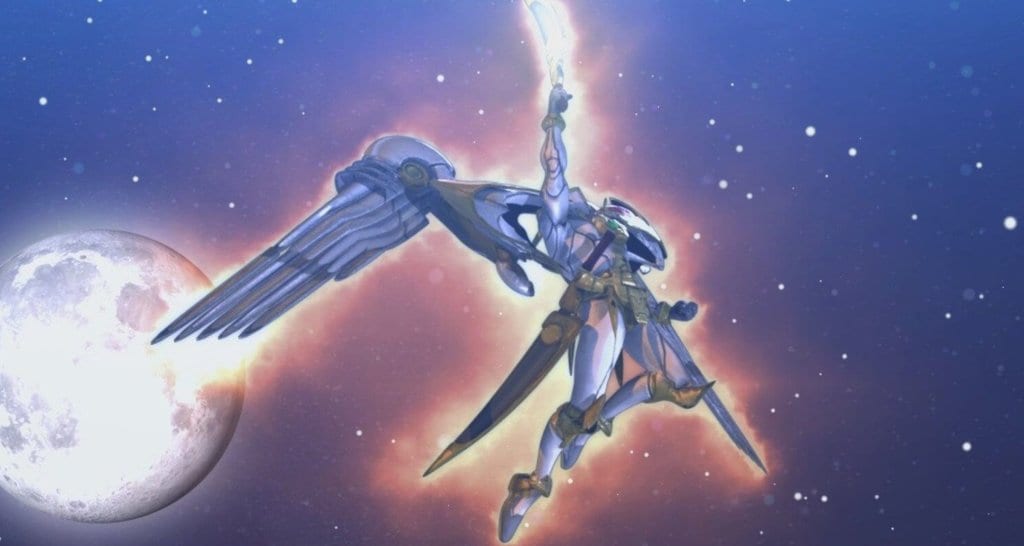REVIEW: Yu-Gi-Oh! Legacy of the Duelist: Link Evolution (Nintendo Switch)
I’m going to date myself a bit here while I reminisce for a moment. In 1998 Nintendo, along with Creatures Inc. and Hudson Soft, developed a digital version of the already exploding Pokémon Trading Card Game for the Nintendo GameBoy Color. The ability to take everyone’s favorite new card game on the go without the worry of dropping your binder or deck box and losing their prized collection of cards was an instant hit. Konami would eventually do the same with the Yu-Gi-Oh! Duel Monsters card game on several of Nintendo’s handheld systems over the next decade. However, it has been quite some time since we last had a full-blown entry in this series, with the last one (that wasn’t for mobile smartphones) being Yu-Gi-Oh! Zexal World Carnival in September of 2014. So, when Konami announced that Yu-Gi-Oh! Legacy of the Duelist: Link Evolution was coming to Nintendo Switch, I got hyped.
Much like the phenomenon that was (and still is to this day) Pokémon, the Yu-Gi-Oh! anime and trading card game hit the West when I was the target age for the product, and they hit the bullseye. Throughout my middle school and early high school years, my friends and I would spend countless hours trading, dueling, and collecting the Duel Monsters cards. We pocketed our lunch money and chose to spend it on booster packs instead of food, as any respectable teen would. I will never forget the very first time one of my friends tried to explain Yu-Gi-Oh! to me over the phone. I must have made my face out loud because, after a brief pause, he said, “Just come over already, and I’ll show you!” Back in 2002, after Upper Deck obtained the rights to print the TCG in the West, the game took all of 15 minutes worth of an explanation and then a single practice duel to learn what were, at the time, the simple mechanics of Duel Monsters. The game has changed immensely since the early 2000s. That being said, the fun strategy of summoning monsters and attempting to defeat your opponent while dodging numerous Spell and Trap cards that seek to stand in your way remains.

At its core premise, Duel Monsters is quite simple: summon various monsters to the field and attempt to lower your opponent’s Life Points (or LP for short) to a big fat goose egg. This is complicated by Spell and Trap cards that your opponent can set up on the back row of their field to protect their monsters from being destroyed, or to counterattack yours. Yu-Gi-Oh! is a lot of back-and-forth exchanges (unless you’re playing with an OTK [One Turn Kill] deck that doesn’t provide that opportunity, but we’ll come back to that). That is to say, provided one deck doesn’t possess demonstrably better cards than the other, the game will always come down to who is the better strategist. However, you’re still subject to Lady Luck when it comes to the cards drawn. This, however, is but a paltry sampling of what the game is once you dive into the weeds. I won’t spend time explaining all of the 8 million mechanics that the Yu-Gi-Oh! card game is made up of in its present state, but suffice to say its depth is substantial. Furthermore, I’m going to operate under the assumption that if you’re reading this review, then you already possess, at minimum, surface-level knowledge of the actual card game and are here to get my take on how the latest video game adaptation translates that. So let’s get after it.
From jump street, Yu-Gi-Oh! Legacy of the Duelist: Link Evolution is playing from ahead and has something for quite literally every generation of Duel Monsters player. Not only does the game’s single-player campaign offer players the ability to recreate over 30 duels from each of the series’ six arcs thus far, from the original Yu-Gi-Oh! to Vrains, but there are over 9000 (insert Vegeta’s angry voice here) cards from across the game’s history within Link Evolution. That may sound like a lot of cards, so don’t worry, because it is! Upon completing a duel, you will receive a given number of Duel Points, or “DP.” The number of DP that you receive post-match is dependant on whether you win or lose, but you always get something. When you emerge victoriously, you also may collect additional duel rewards. These could include the Deck Recipe for your opponent, the character you utilized for that match or even pocket rare cards from the played decks outright. By playing with the decks provided for you in a given duel, you essentially can reenact matches from across the series’ history.

Furthermore, the game also offers a Reverse Duel option, wherein you can flip the script and take control of the opposite character in a duel you’ve completed. This does two things: firstly, it is vital to collect many of the rarer cards in the game. Secondly, it allows you to have Kiba win against Yugi since he’s the better duelist and simply doesn’t have the RNG gods on his side. This is actually the more important of the two features. But enough of that. Duel Points are what you’re truly after in a duel, as you can haul your coin over to the in-game Card Shop. There you can purchase booster packs to craft a unique deck of cards and forge your own path to victory. As you play through each arc’s campaign, you’ll gain access to more booster packs to purchase with your Duel Points. These packs are themed after characters within the arcs from which you unlocked them. Naturally, this allows you to narrow down the boosters that you need to build your ideal deck(s). If you’re a big Yu-Gi-Oh! GX fan and want to make a deck of one of several Hero archetypes, then your DP will primarily be spent on Jaden boosters. If you’re a big Red-Eyes Black Dragon player, then you’ll want to focus your spending on the Joey Wheeler packs unlocked by playing through the original series. The caveat is that it may take you a while to acquire all of the cards (and the number of copies) that you need, but that goes with the territory of playing a trading card game.
The game does an excellent job of translating the physical card game onto the Nintendo Switch. While it plays great in both handheld and docked modes, I’d say the most convenient way to play is on-the-go. The sound effects are crisp for the most part, and playing a card feels satisfying. Some plays, such as the various methods of Special Summoning monsters from the Extra Deck, add in a little extra flair of animation. If you summon a “main monster” such as Dark Magician, you are also treated to a cool 3D rendered clip of that monster upon playing its card. If I had one complaint about the game where visuals are concerned, it would have to be that not enough monsters receive their own 3D rendered animation. While it is first and foremost a card game, this would have been well-appreciated touch. The more critical aesthetics, such as the clarity of the cards when you’re looking at their text, and that of the duel field itself, are crystal clear. This is one of many areas where Link Evolution far surpasses its handheld predecessors.

Deckbuilding is made relatively simple and convenient, given the sheer volume of cards that you can collect in your trunk, and when creating a deck you can choose between any of the unlocked deck recipes that you obtained through the campaign duels, or craft your own original recipe. The former is straightforward enough, and for players who are new to the game, they can be excellent foundations to then swap in cards to prefer and then test them out to see how they play. As for the latter, upon creating a brand new recipe you have the entirety of your collection opened up to you, and it is from here that you will rifle through your mountain (or molehill depending on how many booster packs you’ve purchased) of cards to craft your deck of choice. There are numerous search options, from the extremely specific of typing in a name to the vaguer of card type, color, level, and so forth. Again, the game does a great job of helping out new players and with a simple tap to the right bumper, a side pop-up list of cards that are related to those you’ve already placed into your deck appears. This is incredibly useful for not only new players who likely have no idea where even to start where deckbuilding is concerned outside of picking a main monster card that they like (that’s a great place to start), but also for more experienced players who may simply not have every one of the games’ thousands of cards memorized and what combos well together. I strongly recommend, as a veteran player of the game, any newcomer jump into deckbuilding as soon as they’ve acquired the DP to buy boosters. Not only will it aid with consistency in playing a deck of your creation, but you’re likely going to end up making something much stronger and easier to play than the lion’s share of the decks that the story duels set you up with. Additionally, if you’re new to the game and you’re picking up Link Evolution because you’ve heard of Yu-Gi-Oh! but never played the TCG before, I cannot stress this point enough: play the campaigns in order from the original Yu-Gi-Oh! series to the most recent, Yu-Gi-Oh! Vrains. Why you might ask? The Duel Monsters card game, in its present state, is infinitely more complex than it used to be, as new game mechanics were added with each succeeding arc to the series. At the outset of each arc, you are given a brief but helpful tutorial on how specific game mechanics work and the importance familiarizing yourself with an earlier mechanic before attempting to tackle more recent ones cannot go understated. On the other hand you could go through the tutorials which teach you the various mechanics, but actually putting those into practice is far more effective in the longterm.

What’s the point of a trading card game if you’re not able to play it with other people? One of the biggest criticisms of some past Yu-Gi-Oh! video games was a distinct and tragic lack of multiplayer. Link Evolution doesn’t have that problem, and offers opportunities to duel friends and strangers alike with local matches, unranked online matches, and ranked online matches with leaderboards to choose from. The handful of matches that I played were pretty smooth and had no noticeable lag, but it’s a relatively small sample size that I’m drawing that from. Multiplayer duels are pretty straightforward with set time limits and ban lists for cards that are no longer allowed in play. I encourage players to check out these online duels once they’ve constructed a solid deck of their own. After all, you will more than likely be running into players running decks that are pretty meta-relevant for competitive play.
Other single-player modes worthy of note are the Duelist Challenges, which pit you against characters from a given arc of the anime much in the same manner as the campaign duels. However, these challenges are mean to be just that – challenging, and you will face off against far better-constructed decks in these. You may find these to be much better measures for your skills and the quality of your own deck. Just as with the story mode, you will earn DP, reward cards, and the corresponding deck recipes upon winning the duel. Beyond that, there is also Battle Pack mode, in which you pay a set amount of Duel Points to play with a deck that either you will build yourself from 45 cards in Draft Play, or an instantly-made deck from 10 five-card Battle Packs in Sealed Play. These Battle Pack modes mirror Draft Day events that take place at many local card shops and can be a challenging and entertaining way to play for duelists looking for a bit of a shake-up from their usual go-to decks.
Yu-Gi-Oh! Legacy of the Duelist: Link Evolution is a perfect blend of the fun of the traditional trading card game and the convenience of dueling on the go without lugging your binder and decks with you wherever you go. Whether you’re new to Duel Monsters or have been playing since it hit western shores, a die-hard fan of the original series or a lover of Arc-V, there’s quite literally something for everyone here. The game in both its mechanics and visuals is crisp, and the variety of modes and ways to play keeps you dueling and constructing decks for hours on end. So long as you aren’t expecting a riveting narrative, this card game finds a perfect home on the Nintendo Switch. The only thing that’s really left to say is… it’s time to duel!
Yu-Gi-Oh! Legacy of the Duelist: Link Evolution
Gameplay - 10
Difficulty - 10
Story - 6
Graphics - 9.5
Sound Design - 9.5
9
Great
Legacy of the Duelist: Link Evolution offers something for every generation of Yu-Gi-Oh! player. From the single-player modes and library of cards that span the full scope of the series, to the competitive online duels for those looking for a more challenging experience against others, the game plays great, looks great, and sounds great. Don't expect much in the way of story and you're golden.
Comments (2)


The old Shonen Jump mangas for Yu-Gi-Oh! were fantastic, and I’ve always had a love of the card game. I’m thrilled that you not only enjoy the game itself, but also my review. Sincerely, thank you for taking the time to read this piece.








I used to read Yu-gi-oh as a kid in shonen jump but never really got into the card game. I picked this up for my switch and it is awesome far! Thanks for the review.